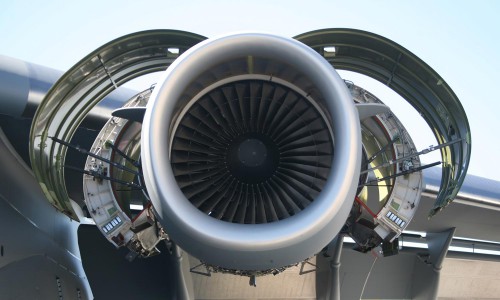Aluminium alloys soaring high in the automotive and aerospace sector
Team AL Circle
2024-01-20
Aerospace and automobile comprise the two most important industries that use aluminium alloys. The complex materials find large-scale use in constructing the various body parts of aircraft and vehicles due to their versatile characteristics and, especially, their lightweight nature. The low- density aluminium alloys help reduce the total weight of the structure and improve fuel efficiency and load capacity.
In addition to its lightweight nature, aluminium alloys also have excellent corrosion and fatigue resistance capabilities. This ensures the long-term service life of aircraft and automobiles. They also come with good recyclability. This property aligns with the principles of sustainable development. The hardness and strength of aluminium alloys also allow for enhanced heat treatment.
Top 5 aluminium alloys used in the automotive and aerospace industry:
1. AA2024 (T3, T4): The Workhorse
This element is suitable for structures that require a high strength-to-weight ratio. The material is used for building structures that come under high tension. It is commonly found in sheet or plate form and the alloy is often heat-treated to enhance the strength of the latter, further.

Chemical composition:
- Aluminium (Al): 90.7%
- Copper (Cu): 3.8-4.9%
- Manganese (Mn): 1.2-1.8%
- Magnesium (Mg): 1.2-1.8%
- Other Elements (each): 0.05%
- Other Elements (total): 0.15%
- Iron (Fe): 0.5%
- Silicon (Si): 1.0%
- Zinc (Zn): 3.3-4.9%
- Chromium (Cr): 0.1%
- Titanium (Ti): 1.8%
Properties:
- High strength
- Good workability and machinability
- Excellent fatigue resistance
Applications:The alloys are commonly used to make wings and fuselage structures of aircraft. They are also used to build specialised structures for racing cars.
2. AA6061 (T6): The versatile warrior
The AA6061 complex is produced in large quantities because of its extensive use in various industries. It comes with a highly versatile nature and has enhanced capabilities. The alloy has a wide range of properties, which adds to its usefulness.
Chemical composition:
- Aluminium (Al): 97.9%
- Silicon (Si): 0.6%
- Iron (Fe): 0.7%
- Copper (Cu): 1.0-1.2%
- Manganese (Mn): 0.15%
- Magnesium (Mg): 1.0-1.2%
- Chromium (Cr): 0.04-0.35%
- Zinc (Zn): 0.25%
- Titanium (Ti): 0.15%
Properties:
- High corrosion resistance
- Good weldability
- Excellent strength
- Enhanced thermal conductivity
Applications: The complex material is used to build heavy-duty structures. They can also be used for building truck frames, helicopter rotor skins, and complex aircraft parts.
3. AA7075 (T6): The strength king
This alloy of aluminium is 7075 T6 tempered. This is achieved by treating the alloy with a heat solution. The alloy guarantees excellent strength. It is perfect for building high-stressed structural parts of aeroplanes and automobiles.
Chemical composition:
- Aluminium (Al): 90.7%
- Zinc (Zn): 5.6%
- Copper (Cu): 2.5%
- Magnesium (Mg): 1.6%
- Other Elements (each): 0.05%
- Other Elements (total): 0.15%
- Iron (Fe): 0.5%
- Silicon (Si): 0.4%
- Manganese (Mn): 0.3%
- Chromium (Cr): 1.2%
- Titanium (Ti): 0.2%
Properties:
- High corrosion resistance
- Low density
- Great machinability
- High-stress resistance
Applications: This Al alloy is used for top-line bicycle components, fuse parts, and other commercial aircraft fittings.
4. AA5754 (H22, H24): The corrosion fighter
Aluminium 5754 comes with excellent properties for manufacturing aircraft and automobile parts. It has higher strength than most other alloys. The alloy comes with high workability. It is also being used in combination with various other aluminium alloys to increase its functionality.
Chemical composition:
- Aluminium (Al): 97%
- Magnesium (Mg): 2.6-3.6%
- Manganese (Mn): 0.5%
- Iron (Fe): 0.4%
- Silicon (Si): 0.3%
- Copper (Cu): 0.1%
- Chromium (Cr): 0.2%
- Zinc (Zn): 0.2%
- Others (total): 0.15%
Properties:
- High corrosion resistance
- Low density
- Increased workability
- Enhanced strength and durability
Applications:AA5754 is used for manufacturing marine alloys, boat hulls, aircraft wings, etc.
5. AA5083 (O): The welding wizard
AA5083 (O) has elevated welding capabilities. This material finds its usage in various sectors. It is primarily heat-treated and available in the form of plates. The alloy can be given any shape required. This makes it versatile for industrial use.
Chemical composition:
- Aluminium (Al): 95.6 - 97.5%
- Magnesium (Mg): 4.0 - 4.9%
- Manganese (Mn): 0.40 - 1.0%
- Chromium (Cr): 0.05 - 0.25%
- Iron (Fe): 0.0 - 0.4%
- Copper (Cu): ≤ 0.1%
- Zinc (Zn): ≤ 0.25%
- Titanium (Ti): ≤ 0.15%
Properties:
- High strength-to-weight ratio
- Extremely lightweight
- Corrosion resistance
Applications: AA5083 (O) is used in fuel lines, pressure vessels, and aeroplane wings.
To end with:
The unique properties of Al and its various alloys have made them a superior choice of material for multiple industries. So, each time we see an advanced vehicle pass by or an aeroplane soar above our heads, we know which element to thank- the mighty aluminium.
Categories
Raw Materials
Scrap
Consumables
Primary Aluminium
Secondary Aluminium
Equipment
Technology
Downstream Products
Finished Products
Utilities
Services
Others
Recent Blogs
Subscribe to newsletter
Connect with us












